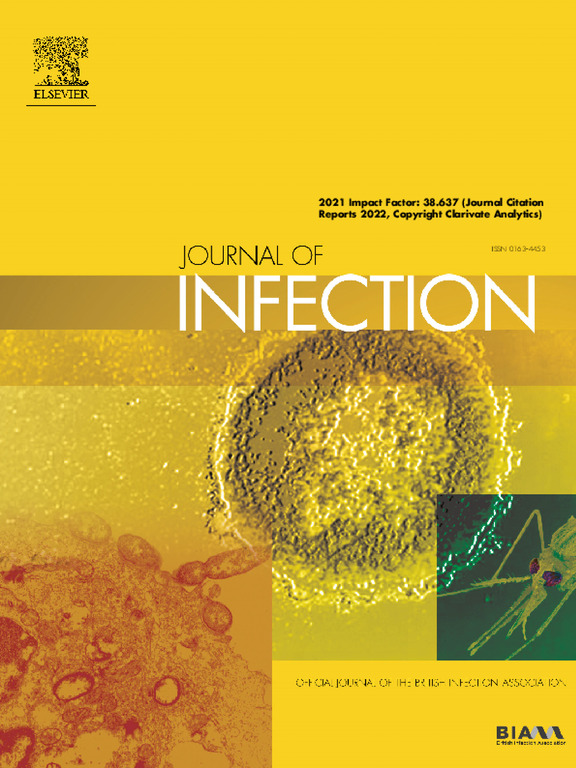Occurrence and predictors of laboratory abnormalities during outpatient parenteral antimicrobial therapy – A multicenter cohort study to inform laboratory test monitoring
IF 14.3
1区 医学
Q1 INFECTIOUS DISEASES
引用次数: 0
Abstract
Objectives
Evidence on the optimal frequency of laboratory testing during outpatient parenteral antimicrobial therapy (OPAT) is lacking. Therefore, we investigated how often and when laboratory abnormalities occur during OPAT and which factors are associated with these abnormalities.
Methods
We performed a multicenter cohort study in four Dutch hospitals among adult patients receiving OPAT and collected routinely obtained laboratory test results. Incidence and incidence rates were calculated for various laboratory abnormalities. Survival analysis was performed to visualize the time to the first occurrence of laboratory abnormalities and Poisson regression analysis to compare the number of abnormalities in the first and second 30 OPAT days among patients receiving OPAT for ≥60 days. Predictors were identified using a multivariable Cox proportional hazard regression model.
Results
45.1% of 1152 included patients developed laboratory abnormalities, but only 2% led to OPAT discontinuation. Hepatotoxicity was most common (33.9 events/1000 OPAT days), with a time-dependent decrease in the occurrence of the first hepatotoxic event, while hypokalemia was rare (1.7 events/1000 OPAT days). In the subgroup of patients receiving ≥60 days of OPAT, nephrotoxicity was more common in days 31–60. We observed partly toxicity-specific associations between antibiotic type, concomitant medication, baseline laboratory values, patient characteristics, and the occurrence of laboratory abnormalities.
Conclusions
While laboratory abnormalities are frequently observed during OPAT, they rarely lead to discontinuation of OPAT. Specific patient, treatment and laboratory characteristics were associated with the occurrence of laboratory abnormalities. Based on our results, we recommend a more personalized laboratory monitoring policy with less blood sampling.
门诊胃肠外抗菌治疗期间实验室异常的发生率和预测因素--一项多中心队列研究,为实验室检验监测提供依据。
目的:关于门诊肠外抗菌治疗(OPAT)期间实验室检测的最佳频率尚缺乏证据。因此,我们对 OPAT 期间实验室异常发生的频率和时间以及与这些异常相关的因素进行了调查:我们在四家荷兰医院对接受 OPAT 治疗的成年患者进行了一项多中心队列研究,并收集了常规实验室检测结果。我们计算了各种实验室异常的发生率和发病率。对接受 OPAT≥60 天的患者进行了生存分析,以直观显示首次出现实验室异常的时间,并进行了泊松回归分析,以比较接受 OPAT 前 30 天和后 30 天的异常数量。使用多变量考克斯比例危险回归模型确定了预测因素:结果:在纳入的1152名患者中,45.1%的患者出现实验室异常,但只有2%的患者因此停用了OPAT。肝毒性最为常见(33.9 例/1000 OPAT 天),首次肝毒性事件的发生率随时间推移而下降,而低钾血症则很少见(1.7 例/1000 OPAT 天)。在接受 OPAT 治疗≥60 天的患者亚组中,肾毒性在第 31-60 天更为常见。我们观察到抗生素类型、伴随用药、基线实验室值、患者特征与实验室异常发生之间存在部分毒性特异性关联:虽然在 OPAT 期间经常会观察到实验室异常,但它们很少导致 OPAT 的中止。特定的患者、治疗和实验室特征与实验室异常的发生有关。基于我们的研究结果,我们建议采取更个性化的实验室监测政策,减少抽血次数。
本文章由计算机程序翻译,如有差异,请以英文原文为准。
求助全文
约1分钟内获得全文
求助全文
来源期刊

Journal of Infection
医学-传染病学
CiteScore
45.90
自引率
3.20%
发文量
475
审稿时长
16 days
期刊介绍:
The Journal of Infection publishes original papers on all aspects of infection - clinical, microbiological and epidemiological. The Journal seeks to bring together knowledge from all specialties involved in infection research and clinical practice, and present the best work in the ever-changing field of infection.
Each issue brings you Editorials that describe current or controversial topics of interest, high quality Reviews to keep you in touch with the latest developments in specific fields of interest, an Epidemiology section reporting studies in the hospital and the general community, and a lively correspondence section.
 求助内容:
求助内容: 应助结果提醒方式:
应助结果提醒方式:


